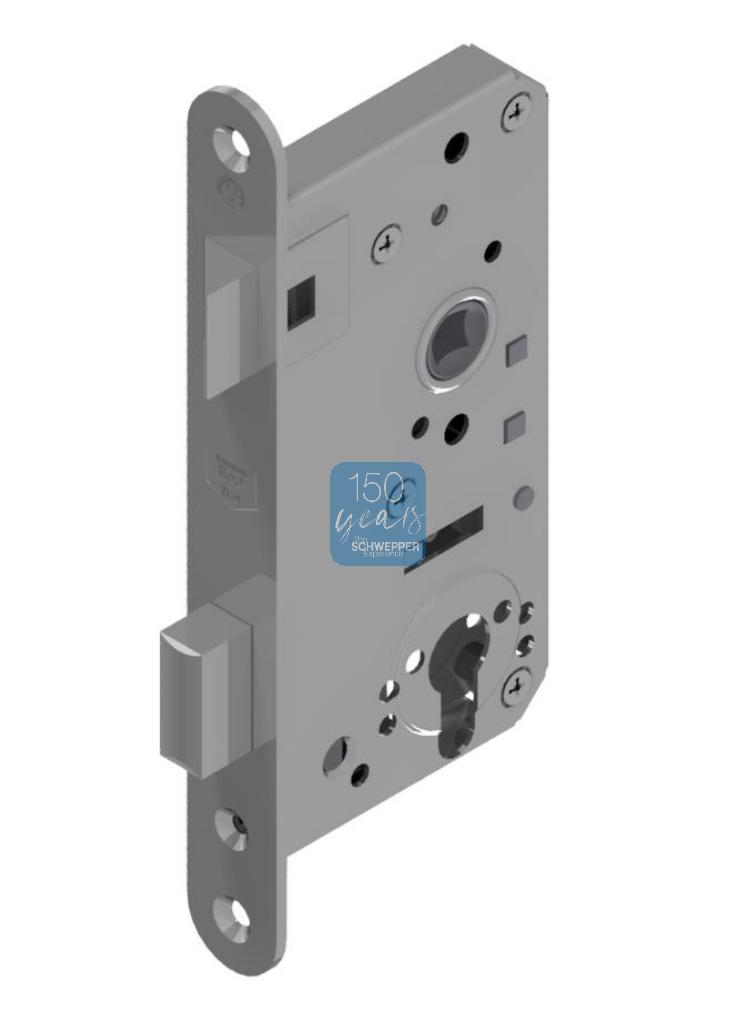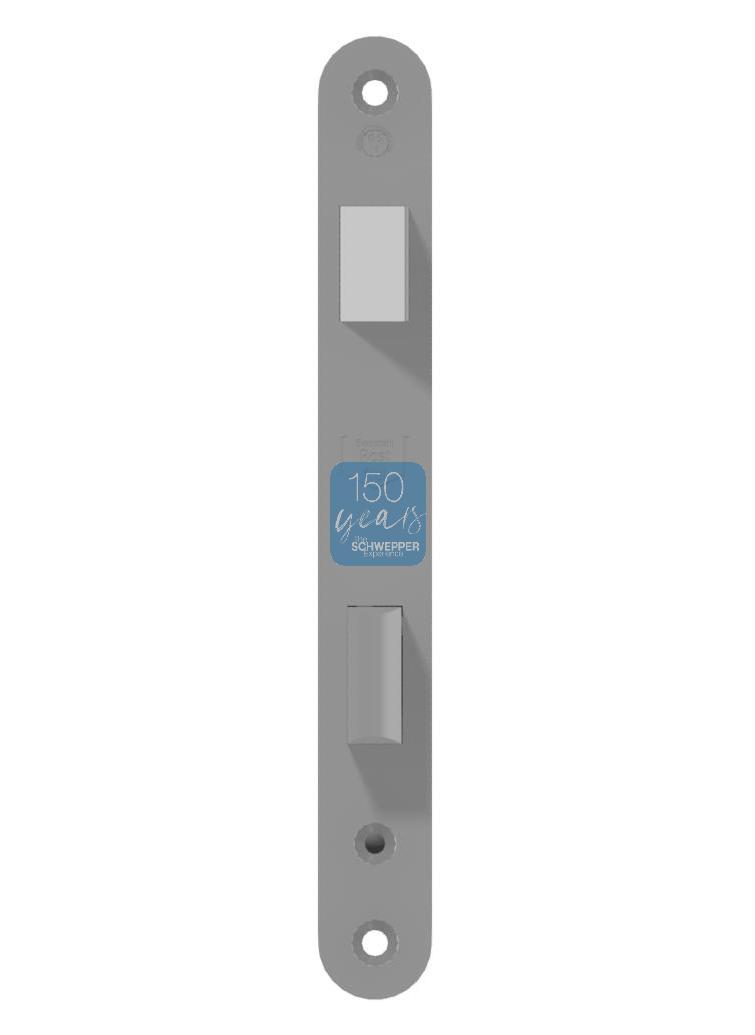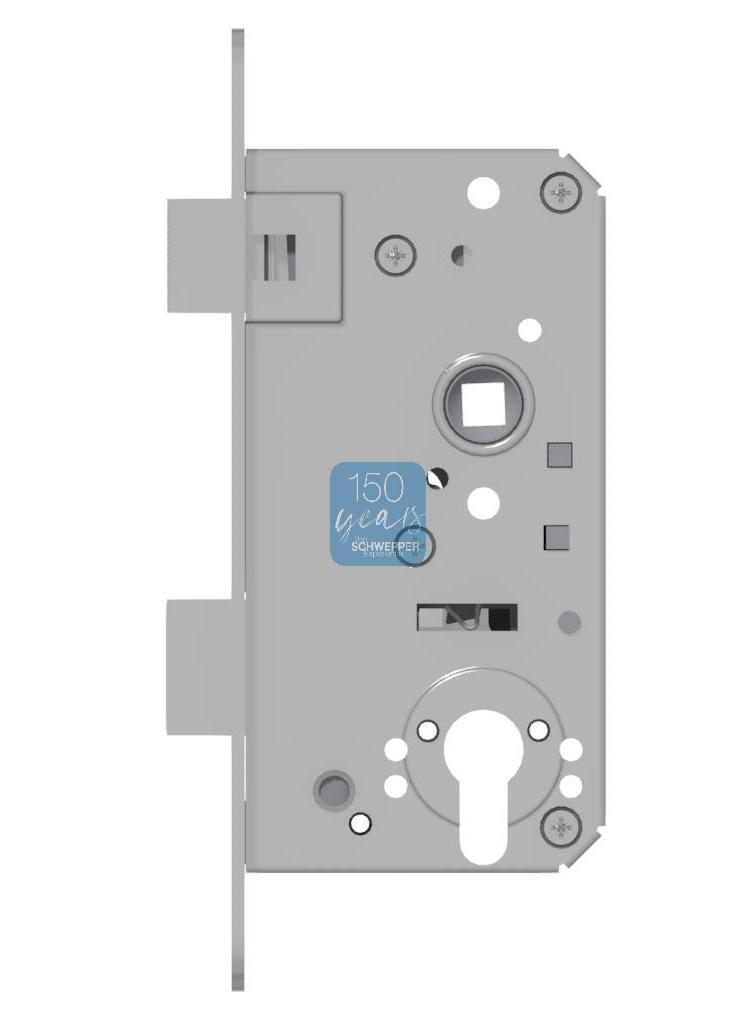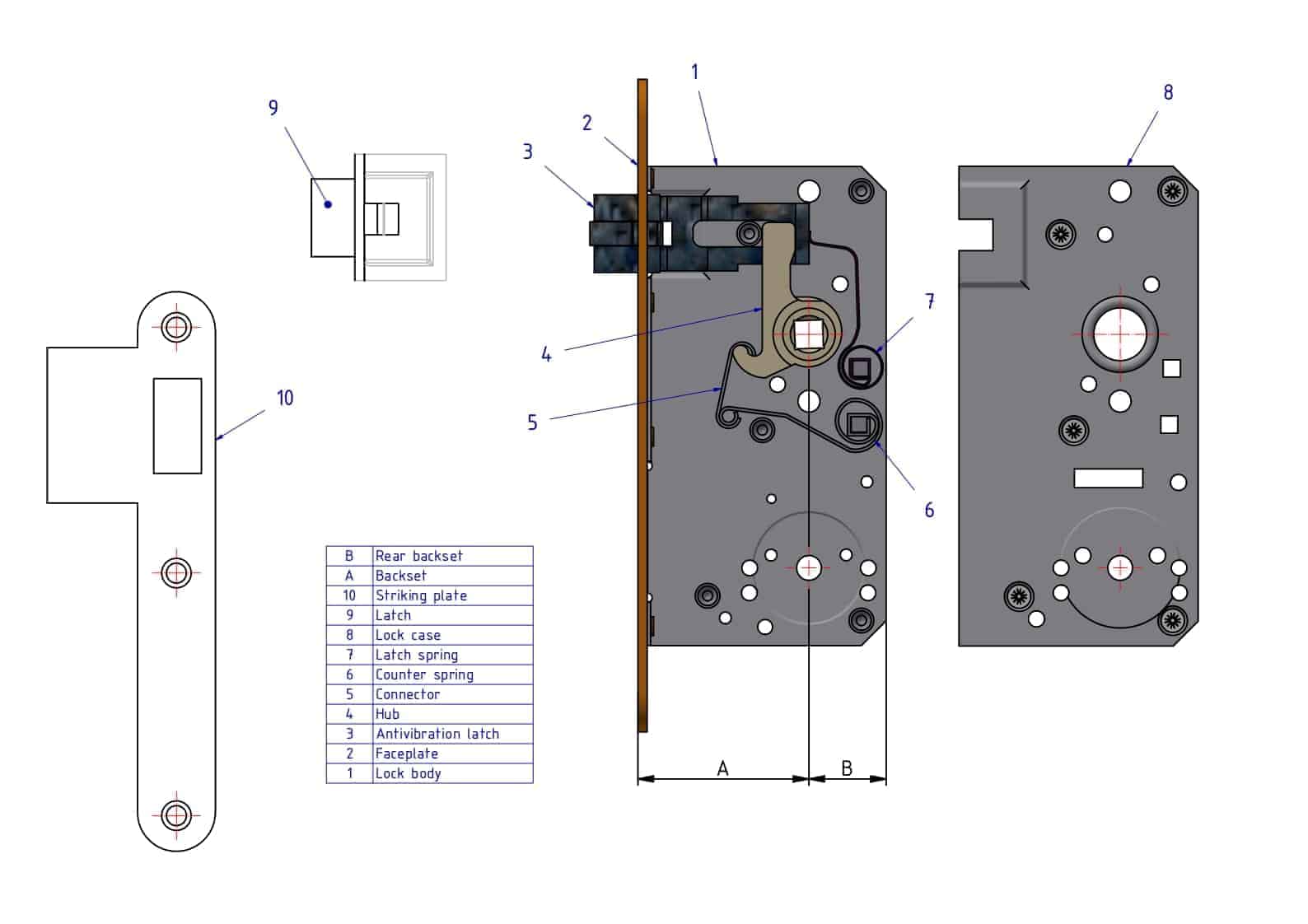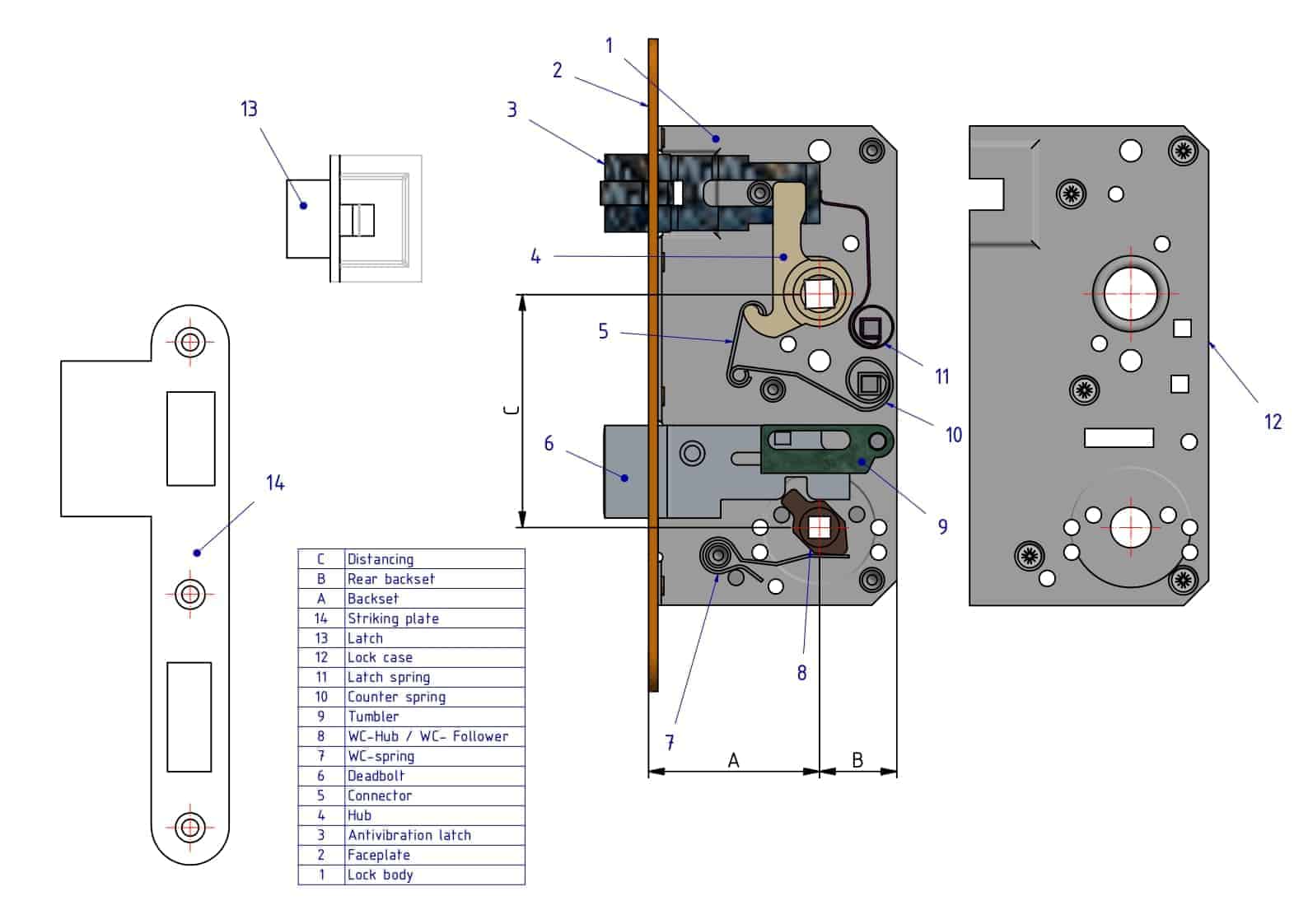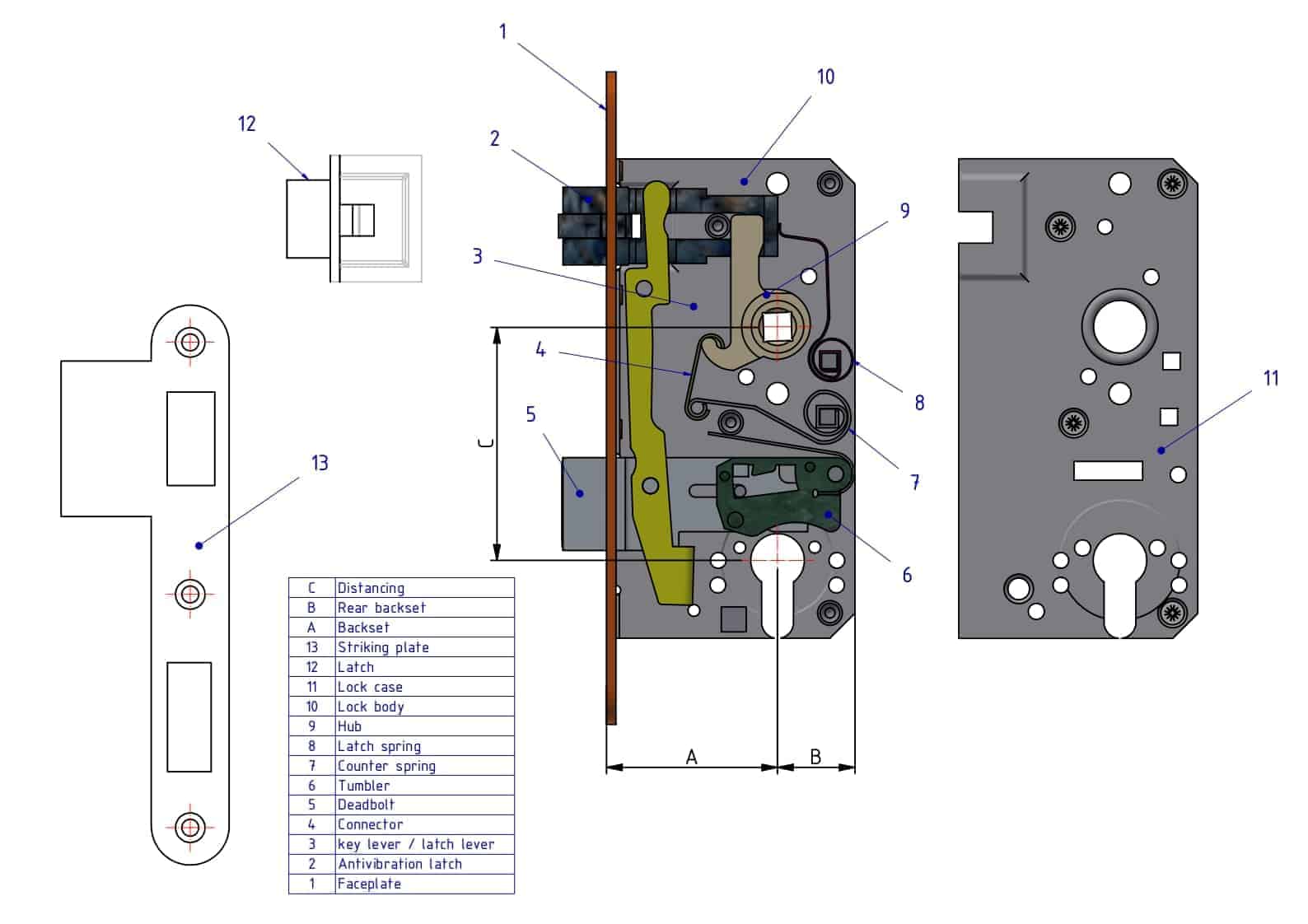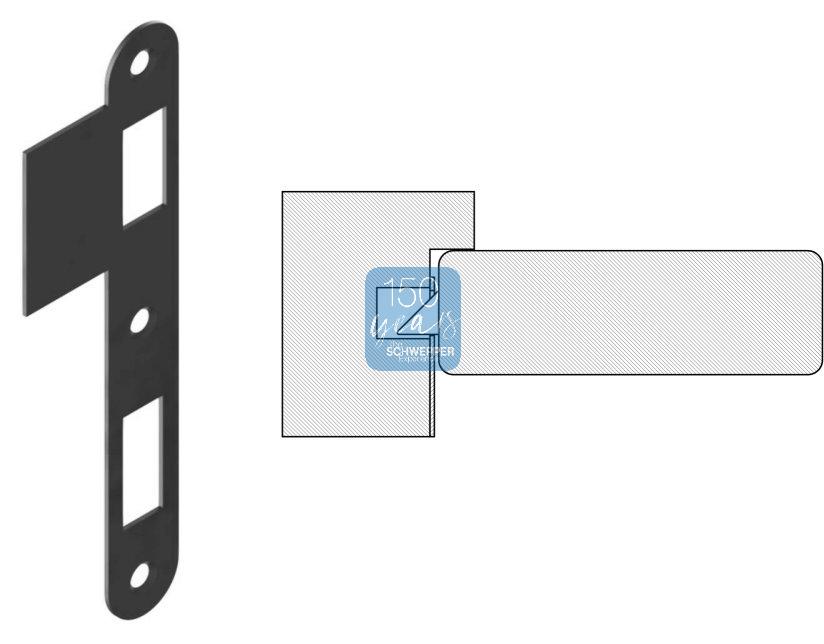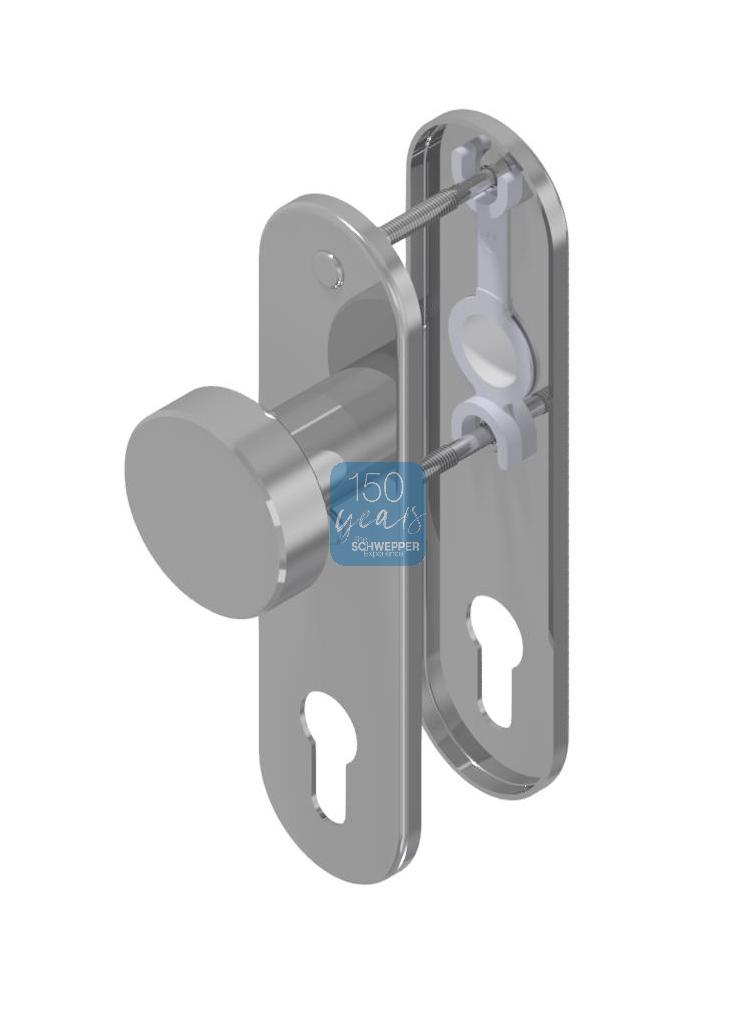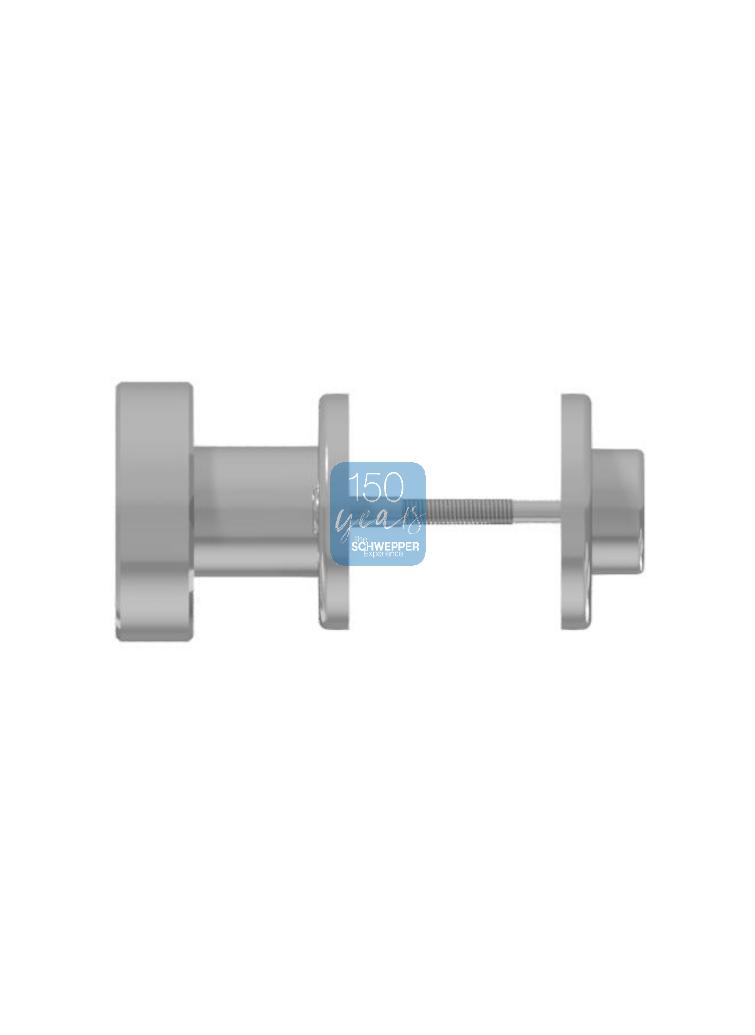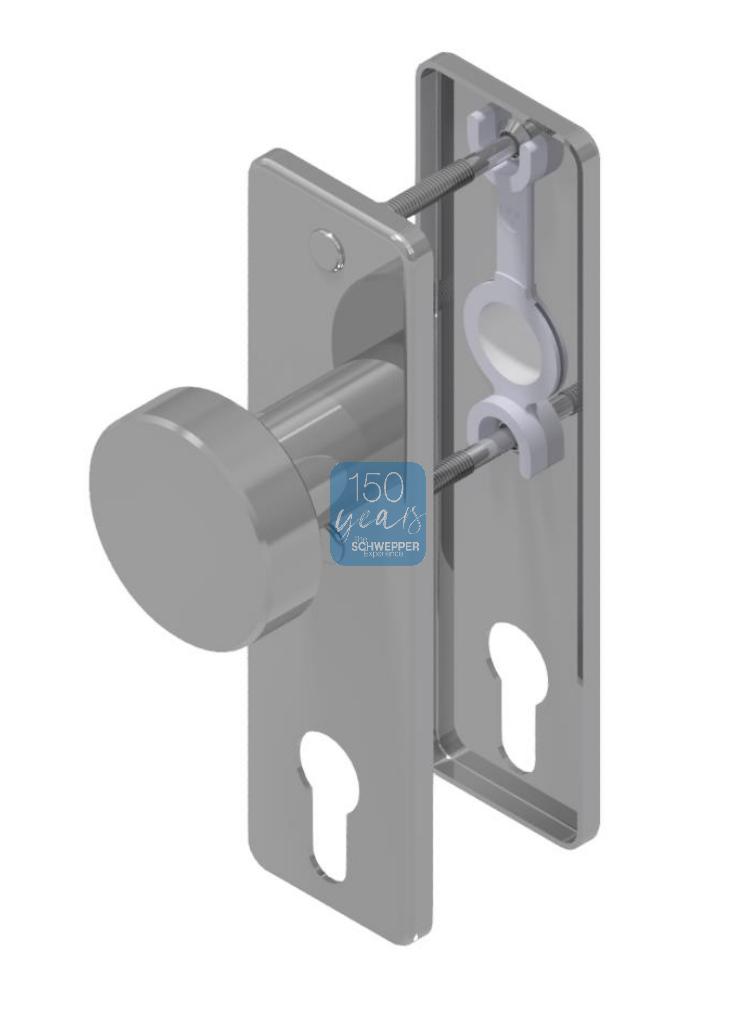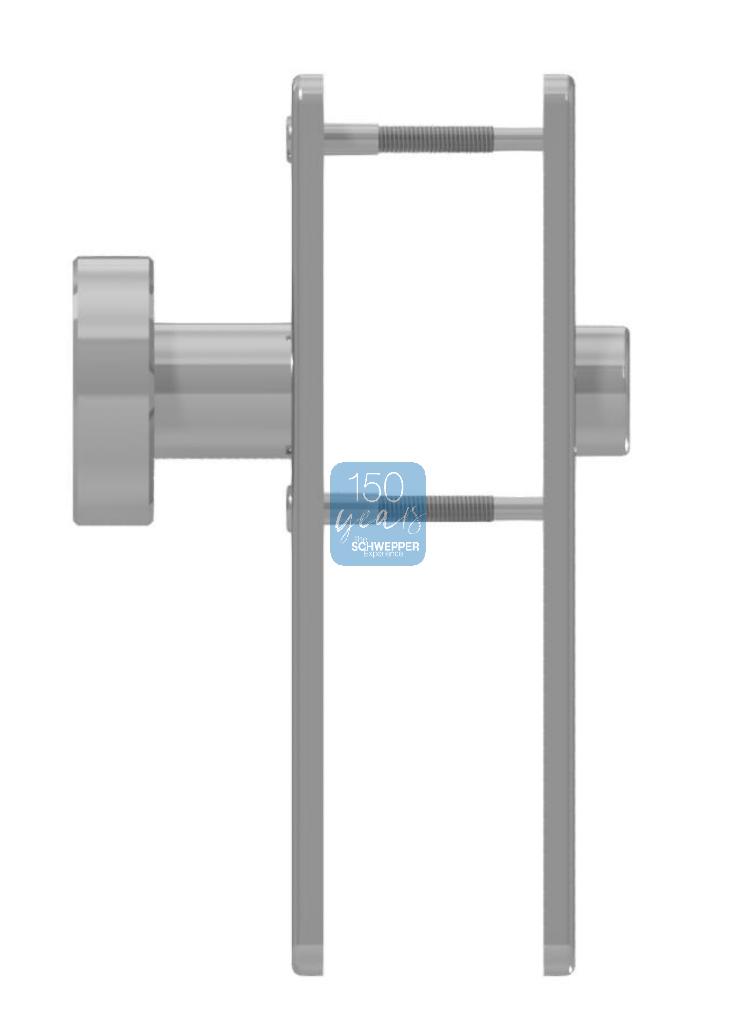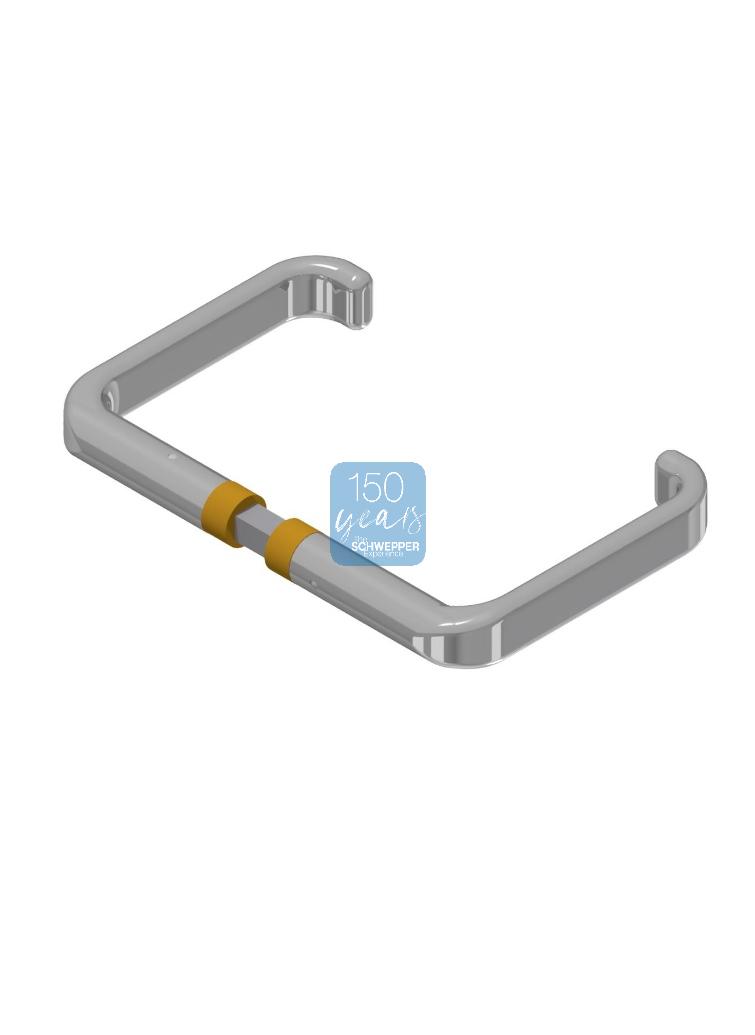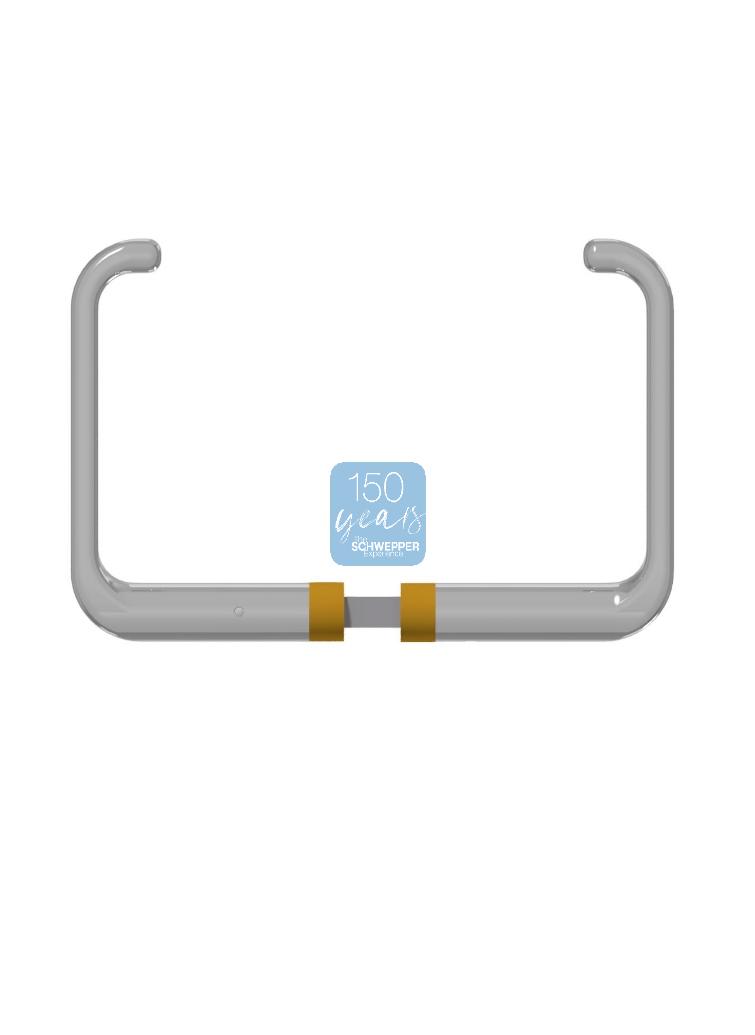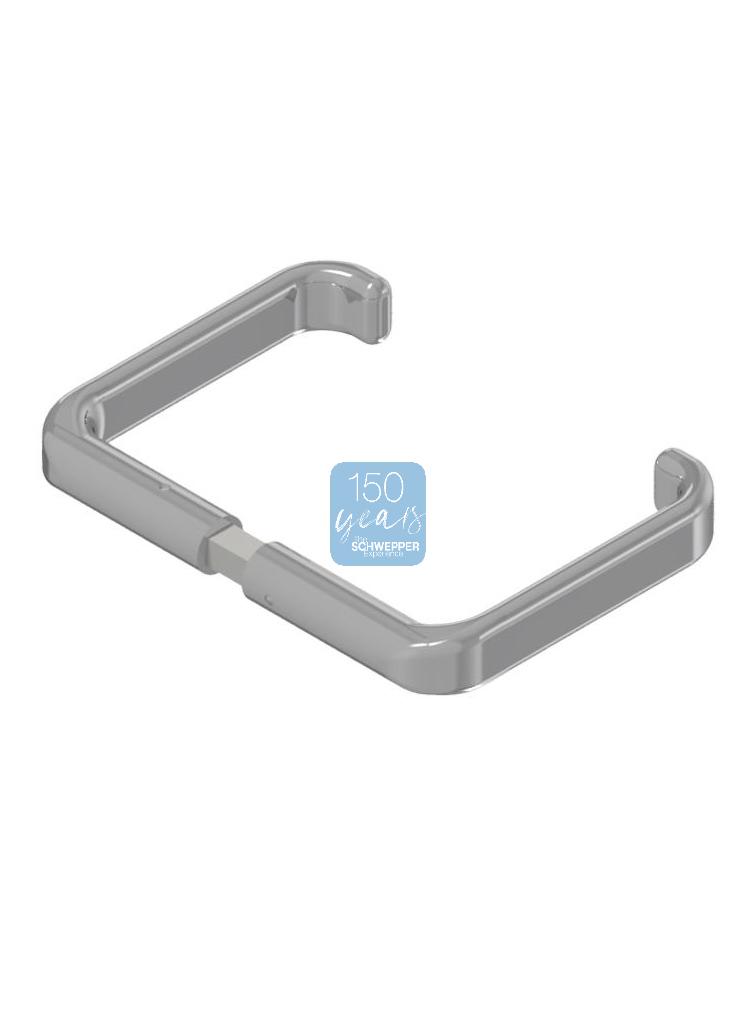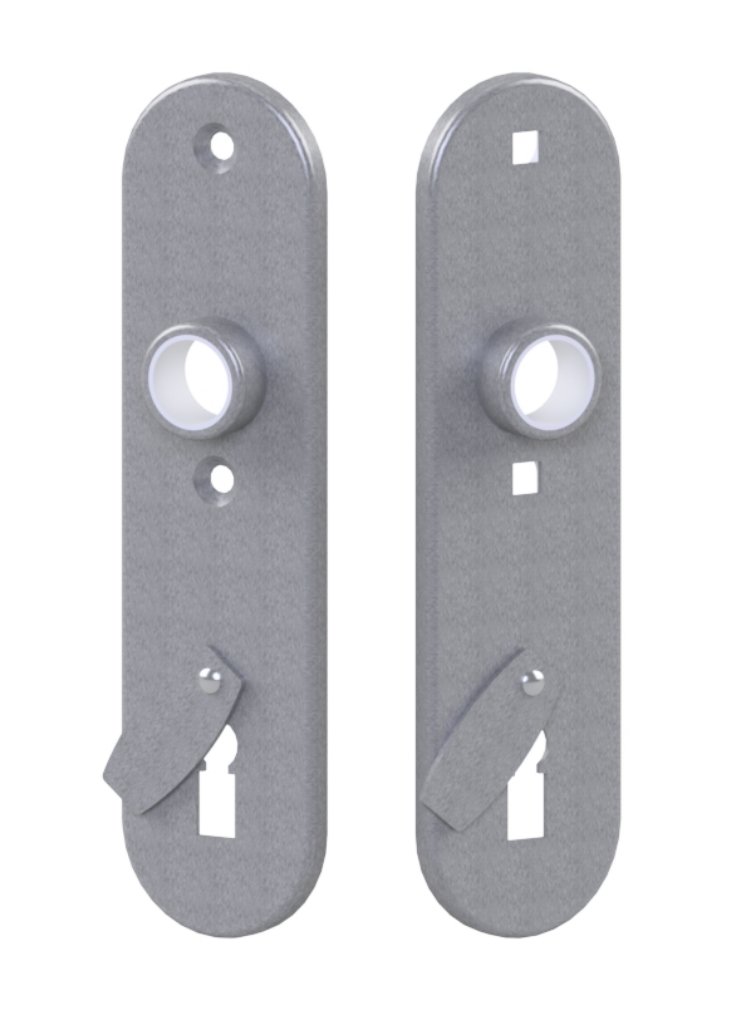
Short plates with key hole and cover distancing 75mm in Brass for mortise locks with skeleton key | GSV-No. 6643 A
16. May 2021
Sliding door rim lock Stainless steel for glass doors | GSV-Nr. 9714 SF
20. July 2021Anti-Panic | Emergency door opening mortise lock for cylinder latch protrusion 16mm complete stainless steel (304) anti-piracy on board (ISPS) | GSV-No. 3816 APZ
SKU: 3816 APZ
Standard product

Antipanic mortise lock for cylinder
GSV-No. 3816 APZ
without cylinder / strike plate
complete stainless steel
not to be used together with thumbturn-cylinders
The anti-panic function in mortise locks is a critical feature designed to enhance safety and security in emergency situations. Here’s a detailed description of the anti-panic function in mortise locks:
First: Emergency Egress: The anti-panic function enables individuals to easily and swiftly exit a room or building in emergency situations, such as fires, natural disasters, or security threats. It is a key component of the overall life safety systems.
Second: One-Step Unlocking: When activated, the anti-panic feature allows the door to be unlocked with a single action, typically by turning the inside lever or push bar. This simplicity is crucial in high-stress situations when individuals may be in a state of panic and need to exit quickly.
Third: No Key Required: Unlike traditional mortise locks that may require a key to unlock from the inside, the anti-panic function operates without the need for any special tools or keys. This ensures that anyone can operate the lock without prior training.
Fourth: Always Accessible: The anti-panic function is typically designed to be always accessible from the inside, regardless of whether the door is locked or unlocked from the outside. This ensures that individuals can exit freely without concern for the lock’s status.
| Weight | N/A |
|---|---|
| HS-Code | |
| Product class | |
| Sales unit |
General note: the general delivery times as stated below can deviate in certain cases due of supply shortages!
Brass:
• The general delivery time for products in brass satin chromed is currently 6 weeks
• The general delivery time for products in brass polished / brass polished chromed is currently 8 weeks
Stainless Steel:
• The general delivery time for products in stainless steel is currently 4 weeks
• The general delivery time for products in stainless steel polished / fine grind is currently 6 weeks
Aluminum:
• The general delivery time for products in Aluminum silver andodized is currently 4-6 weeks
• The general delivery time for products in Aluminum powder coated is currently 6-8 weeks
 Note on express dispatch | 24 delivery service
Note on express dispatch | 24 delivery service Each item with a stock quantity can be dispatched within 24 hours. The surcharge for the 24h delivery service is 5%.
The 2° incline is specified by the shipbuilding norm DIN

Our products do not contain the following chemical hazardous substances:
| Substance |
|---|
| Asbestos |
| Polychlorinated biphenyls (PCBs) |
| Chlorofluorocarbons (CFCs) |
| Halons |
| Other fully halogenated CFCs |
| Carbon tetrachloride |
| 1-1-1-Trichloroethane |
| Hydrochlorofluorocarbons |
| Hydrobromofluorocarbons |
| Methyl bromide |
| Bromochloromethane |
| Anti-fouling systems containing organotin compounds as a biocide |
| Cadmium and cadmium compounds |
| Hexavalent chromium and hexavalent chromium compounds |
| Lead and lead compounds larger 3% |
| Mercury and mercury compounds |
| Polybrominated biphenyl (PBBs) |
| Polybrominated dephenyl ethers (PBDEs) |
| Polychloronaphthalenes (Cl >= 3) |
| Radioactive substances |
| Certain shortchain chlorinated paraffins |
| Perfluorooctane sulfonic acid (PFOS) |
| Brominated Flame Retardant (HBCDD) |
QR Code

What are the general handings of a door?
Answer: Mortises
The hand of door for mortise locks is defined as:
if the door is closed and the hinges are visible on the right/left, then the door is right/left hand. The door is therefore hinged on the right/left and according by definition of DIN right/left.
Or: if you grasp the handle with your right hand and latch and deadbolt show to the left, then it is right hand. If you grasp the handle with your left hand latch and deadbolt show to the right, it is a left hand.

Rim locks
The hand of door for rim locks is defined as:
if the door is closed and the hinges are visible on the right/left, then the door is right /left hand. The door is therefore hinged on the right/left and according to the definition DIN “right/left".
In addition to the designation “left” and “right”, it is to be indicated whether the locks are intended for inward or outward opening doors.

Sliding door mortises
The hand of door for sliding door mortises is the same for right and left. Sliding rim door locks different for left and right doors.
When ordering, always indicate “left” or “right”.

What are the essential components of a lock?
Answer:
| Latch
The lock latch keeps the door shut. In order to open the door, it must be retracted. |
| Type of latch design | Illustration |
| single latch | 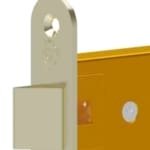 |
| anti-vibration or three-piece latch | 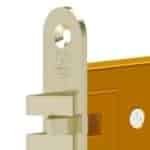 |
| rolling latch adjustable | 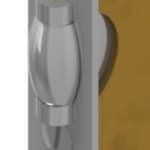 |
| POM-latch for strike dampening | 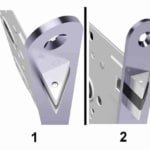 |
| Deadbolt
The deadbolt regulates the access rights through the turning motion of the cylinder by key. The deadbolt is being driven out or retracted through the turning motion. |
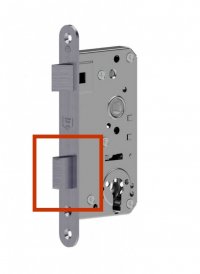 |
| Faceplate
The faceplate is the visible part of the lock case. The faceplate, the latch and the deadbolt are the only visible parts of a mortise. |
 |
Handle hub
The handle hub takes the square spindle of the handle in order to retract the latch inside the lock through the turning motion of the same. This process allows the opening of the door. The shipbuilding norm specifies a 9mm square with a 2° incline. Schwepper supplies also with 8mm square, special contour or 0° incline on request. |
 |
WC-/privacy hub
The WC hub takes the square spindle of the olive or thumb turn, that retracts or drives out the deadbolt from the inside - analogue to the turning motion of the cylinder. The shipbuilding norm specifies a 7mm square. Schwepper supplies also with 8mm square on request. |
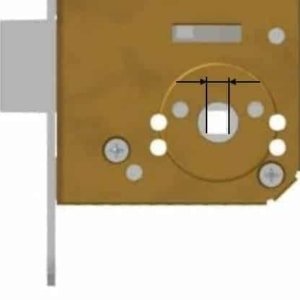 |
What are the essential dimensions of a lock?
Answer:
| Dimension | Illustration | |
| Backset
The backset is the distance from the front edge of the faceplate to the center of the cylinder hole respectively handle hub square. The rear backset behind the center line remains always 27mm. |
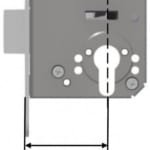 |
|
| Distancing
The distancing is the dimension from the center of the handel hub and the center of the hole for profile cylinder / privacy (WC) / key. The industry standard in shipbuilding is 75mm. |
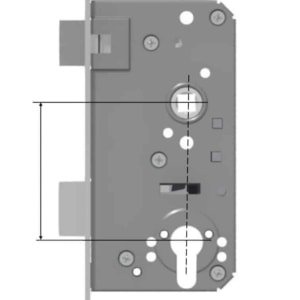 |
|
| Latch protrusion
The latch protrudes according to the industrial DIN standard in shibuilding 14mm. Other technical standards for latch protrusion are: 16 mm according to DOT (Department of Transportation) 19 mm according to USCG (US Coast Guard) |
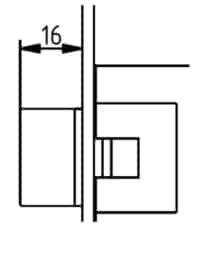 |
 |

